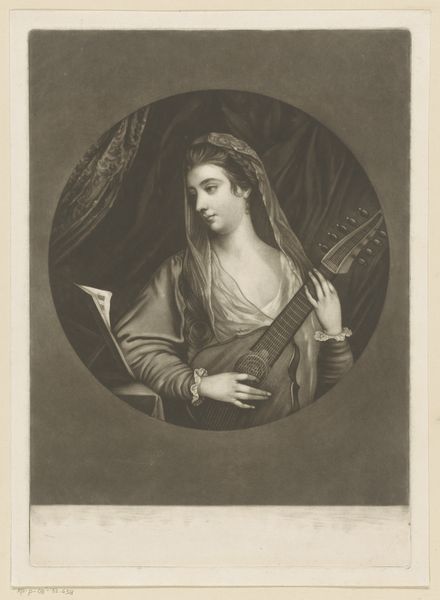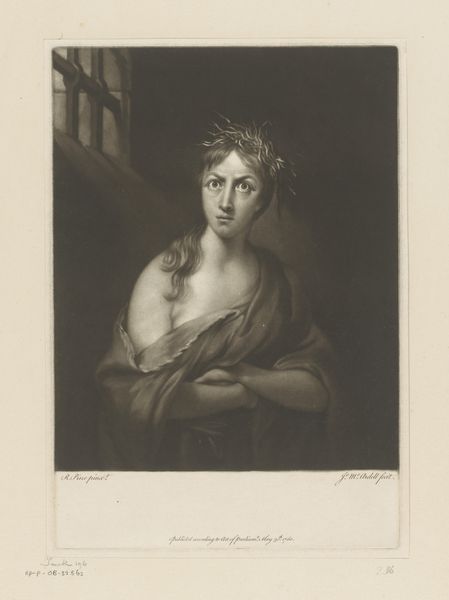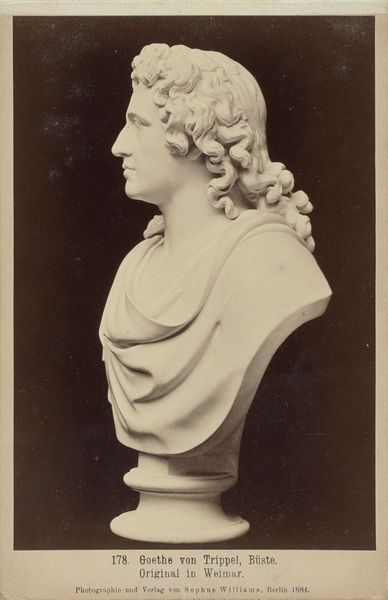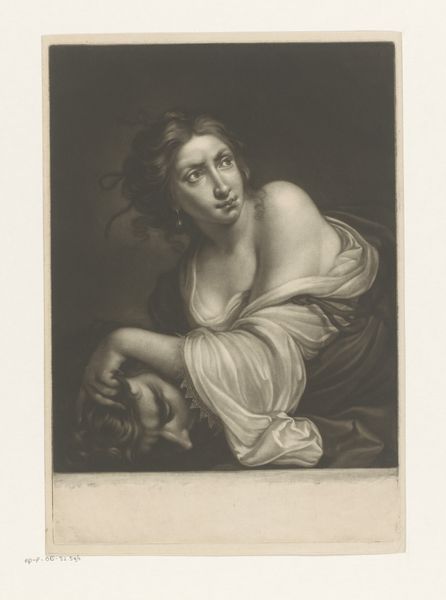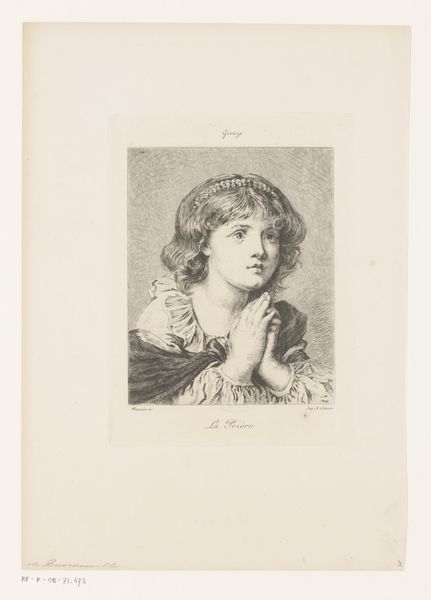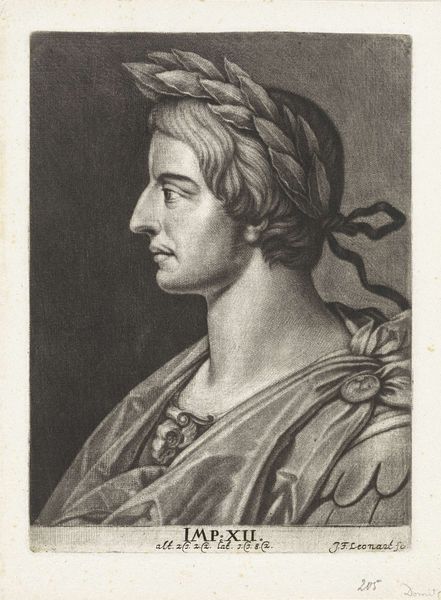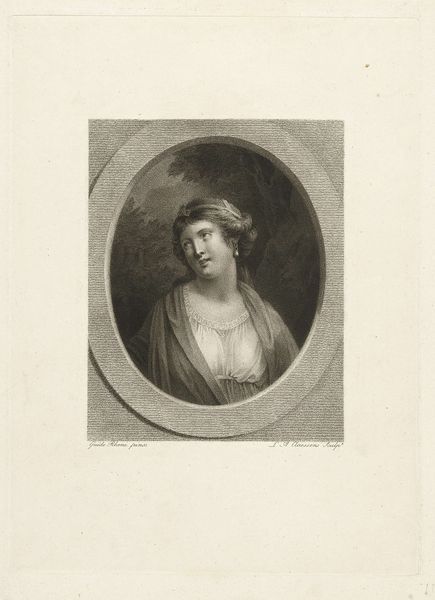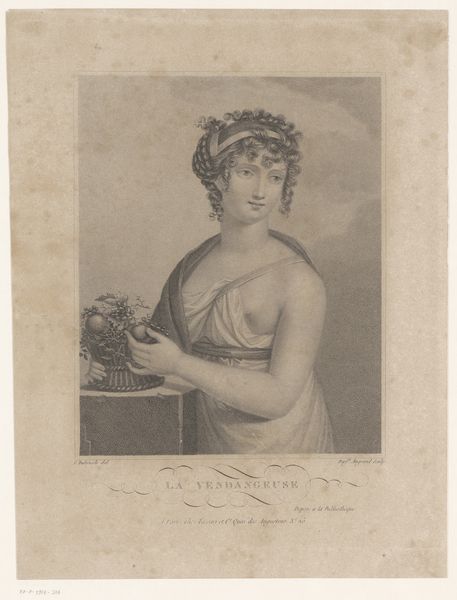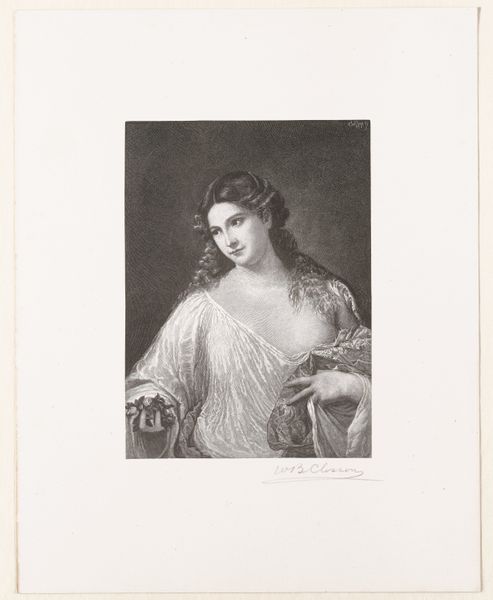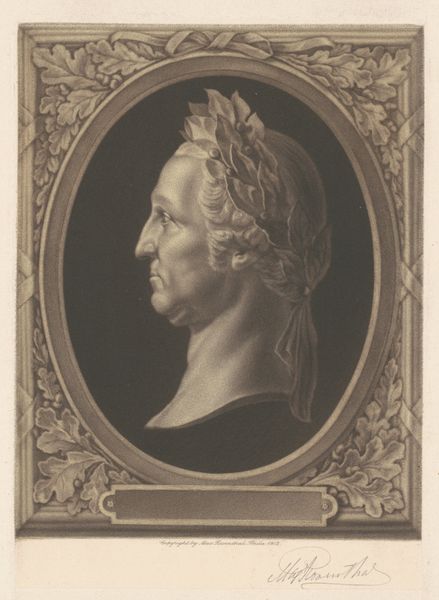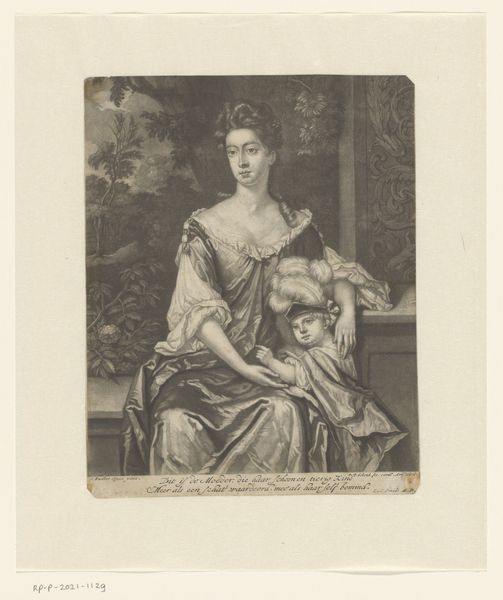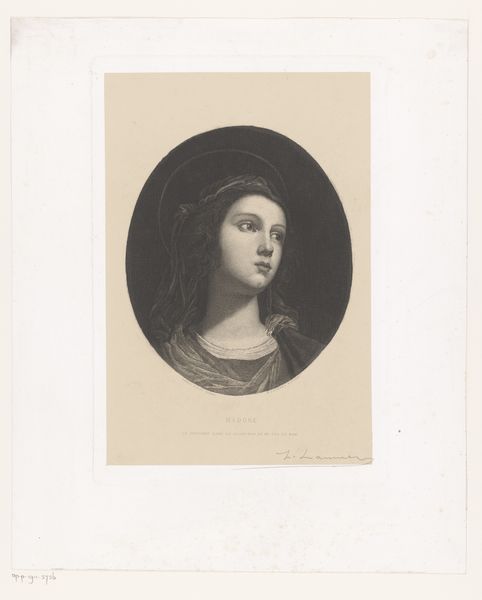
print, engraving
#
portrait
#
print photography
#
neoclacissism
# print
#
history-painting
#
engraving
Dimensions: height 356 mm, width 238 mm
Copyright: Rijks Museum: Open Domain
Curator: Gazing out, almost lost in contemplation. That’s the impression I get instantly from this engraving, “Maria Magdalena.” Editor: It has an odd quietness, doesn’t it? Made by Johann Elias Haid sometime between 1749 and 1809. What immediately strikes me is the framed quality - almost like looking through a window or even at a stage. It puts Maria Magdalena within very deliberate material confines. Curator: Yes! And she’s looking just past that frame. Wondering, I suspect, if the life she has is the life she wants. Or maybe if forgiveness is real. The medium itself, engraving, adds to this sense of quiet reflection—a slow, deliberate, even meditative practice in rendering such depth and emotion. Editor: Absolutely, there's labor involved. Consider the Neoclassical period of its creation. Prints like these became widely available through reproductive technologies that mechanized and disseminated art to a broader public. Were these seen as commodities and how does it affect interpretations of piety and penance embodied by Maria Magdalena? Curator: Oh, I hadn’t thought of that… But in some way it gives her agency too. Think of it, multiplied in workshops, disseminated through broadsheets - imagine the stories women whispered while viewing this 'reformed sinner', contemplating her humanity. Editor: That agency may only exist on the surface; while it is reproduced and perhaps democratized through printmaking, this image still enforces accepted religious norms. Consider how Haid would choose a model or subject to replicate! It all reinforces societal standards, a commodity rather than free thought. Curator: Maybe! I just feel the intensity in her expression overrides it, makes it more human and real. That profile... a hint of sorrow, perhaps? A questioning. It transcends pure representation, and the way light catches her robe. So lovely. Editor: I agree with your observation on this 'lovely' robe. Notice its texture that resulted from the tools Haid was able to harness. Without delving deep into the method behind his materials we risk focusing only on its subjects. Curator: Good point! Maybe it is an idealized repentance... Still, there is that *look.* Editor: Well, regardless of our perspectives, one can still appreciate the sheer labor involved. Let’s meet up for coffee! Curator: It's a date! Always good food for thought examining Maria Magdalena with you.
Comments
No comments
Be the first to comment and join the conversation on the ultimate creative platform.
